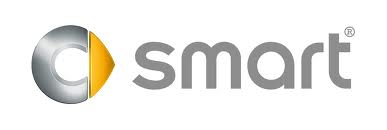ForTwo L3-1.0L (2009)

Fuel: Description and Operation
BB00.40-P-0110-01A General Information on Fuels
BB00.40-P-0110-01A General Information On Fuels
- sheet 110.1
Energy sources for combustion engines in automobiles are almost solely fuels that are created from petroleum by means of a sophisticated
chemical-physical method. These fuels are mixtures of different structured compounds of carbon, hydrogen and possibly oxygen and matched to the
engine combustion system. Relative to the identical weight they have - in comparison to other combustible fluids - a large heat content and thus a high
energy concentration. This energy is released rapidly and immediately after combustion and converted in the engine into mechanical energy.
The following advantages can be added to the benefits associated with liquid fuel:
1
Simple and reliable metering
2
Simple mixture of the finely atomized fuel with air
3
Low-residue combustion where sufficient air is present
4
Constant operational readiness, if necessary matchable to the outside temperature
5
Simple storage and transport
6
Universal gasoline station network
These properties, in combination with the engine devices and fuel additives (e.g. ignition improver) enable the fuel to be adapted to meet combustion
conditions and to put its energy to efficient use.
On a global scale, fuels exhibit different values for their properties. It has been shown however, that these differences, that are primarily reflected in the
respective national standards for the fuels, are indeed adequate for the individual vehicle populations in the various countries. Therefore, as long as
sufficient fuel is used that meets these standards, then it is not necessary to release or prescribe specific fuel brands.
Urgent action does however seem to be required to present this understanding to a wider public, i.e. that the quality of the fuel exerts a decisive influence
on vehicle performance and exhaust gas emissions. Consequentially the fuel grade should be harmonized at an adequate level to meet vehicle
requirements. To achieve this goal, the global automotive industry has created the "World Wide Fuel Charter" ("WWFC"), which defines the objectives
associated with fuel properties, taking the different air quality targets into consideration. The WWFC is revised at regular intervals and adapted to
conform to the latest knowledge.
BB00.40-P-0112-00A Fuel Hazard Classes
BB00.40-P-0112-00A Fuel Hazard Classes
- sheet 112.0
The technical safety characteristics of a fuel determine the safety measures required for the safe storage, distribution and use of fuels as specified by the
respective authorities. In the Federal Republic of Germany, the "Occupational Safety Ordinance" and the "Ordinance on Hazardous Substances" are
applicable.
Directive 1999/45/EC (article 4) refers to hazardous preparations, and the categories and identifiers that apply to fuels and the fire hazard that they
represent are listed below. These are intended to point out the hazards associated with these substances to people handling them. The specified
standardized designations (R-records) must be observed.
Highly flammable
Substances and preparations are categorized as highly flammable and marked with the danger symbol "F+" and the danger designation "highly
flammable" if the test results (flash point, initial boiling point) have been determined in accordance with the relevant standard and have the following
values:
R12 Highly flammable
^
liquid substances and preparations that have a flash point that is below 0 °C and a boiling point (or initial boiling point in case of a boiling range)
of no more than 35 °C;
^
gaseous substances and preparations that are flammable when they come into contact with air at a normal temperature and pressure.
Examples: petrol and various paints
Easily flammable
Substances and preparations are categorized as easily flammable and marked with the danger symbol "F" and the danger designation "easily flammable"
if the test results (flash point, initial boiling point) have been determined in accordance with the relevant standard and have the following values:
